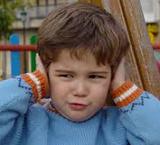 A dissonance is a sound that is unpleasant . The term has its etymological origin in the Latin word dissonantia .
A dissonance is a sound that is unpleasant . The term has its etymological origin in the Latin word dissonantia .
Dissonances cause tension in the ear . That is why these sounds generate rejection , unlike what happens with consonances . This is because the consonance is not tense and that is why it is pleasant.
It can be said that a dissonance is a musical interval that, due to its characteristics, is unpleasant to the ear. It should be noted that the intervals are established from the difference in pitch between two notes. Dissonant intervals, in this framework, do not respect the rules of harmony and are more tense than consonant intervals.
The idea of dissonance is also used in reference to the absence of proportion, conformity or balance that something should have . In this way, dissonance is associated with strangeness .
A cognitive dissonance , for example, occurs when an individual develops two thoughts or behaviors that conflict with each other or with their beliefs. There is, in these cases, an incompatibility between these two simultaneous cognitions.
Faced with the emergence of cognitive dissonance, the subject tends to produce new beliefs that allow them to eliminate tension and achieve harmony based on internal coherence.
Suppose that a young person, in his upbringing, was instilled in the importance of dialogue and avoiding all types of violence . However, one afternoon he sees a man hit a child and is forced to intervene, using force first to make the attacker stop and then to subdue him. The attacker, due to a blow from the young man, ends up hospitalized in serious condition. The boy, faced with this situation, experiences a cognitive dissonance caused by the clash between his moral rejection of violence and his own violent actions, which he finally resolves with the introduction of other values that allow him to justify himself (such as the obligation to assist a person). that is helpless).
 The concept of cognitive dissonance appeared in 1957 when Leon Festinger , an American psychologist, proposed it in his book titled Theory of Cognitive Dissonance . Throughout its pages, the work explains to us that when an individual encounters this incongruence, an inevitable process of producing new beliefs and ideas begins with the aim of reducing tension until consonance and coherence is recovered.
The concept of cognitive dissonance appeared in 1957 when Leon Festinger , an American psychologist, proposed it in his book titled Theory of Cognitive Dissonance . Throughout its pages, the work explains to us that when an individual encounters this incongruence, an inevitable process of producing new beliefs and ideas begins with the aim of reducing tension until consonance and coherence is recovered.
When making decisions, the effect of this type of dissonance is of considerable importance. Every time we make an effort, it is expected that the cost it entails will be accompanied by a reward that we can appreciate. This reward is nothing other than success, what we pursue in exchange for our dedication. If what we get is the opposite, that is, failure , then a dissonance occurs.
When faced with failure, we can try to reduce dissonance in several ways, and one of them is to focus on a future reward ; An example is given when we tell ourselves "you learn from everything, I will never make mistakes like this again." We can also detect certain benefits that we were previously unaware of so that the impact is not so great: for example, after a disappointing purchase because the product is not as we expected, we have the option of being content with certain advantages that we had not anticipated.
Philosophy does not see this kind of dissonance as a phenomenon inherent to our species but as a way of thinking and acting that is related to religion and that is put into practice to move forward after a very painful experience or one that causes deep discomfort. .
